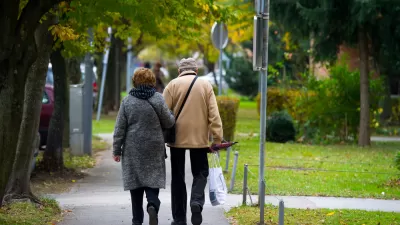A psychology site reviews Mental Health and Social Space: Towards Inclusionary Geographies, a book by Hester Parr that looks at new ideas in including (or excluding) people with mental disabilities from public spaces.
"In the post-institutional era of mental health care how are we to conceptualize "community care" and "the mental patient"? There are those who look back to the institutional era with a fond, usually rose-tinted, nostalgia; for others deinstitutionalization remains an ideal rather than a reality. The literature on psychiatry and mental illness shows increasing divergence. Even mainstream services have adopted "recovery" as a motif, there are new biological discourses, and for many people with mental illness, a forensic identity as either patient or criminal. The movement to community care has had limited success in dismantling the mental patient as different and other. Hester Parr's contribution to this issue uses the conceptual tools of geography to open up debate about the social space of the person with mental health problems, and in so doing to move beyond debate about "institutional spaces and enclosed medical identities" Mental Health and Social Space. Towards Inclusionary Geographies? re-examines the identity of people with mental illness, especially the transition "from inert non-citizen to valued and relational social agent."
Two theoretical chapters provide the background against which Parr reports empirical studies of mental health in various social spaces, with a final chapter looking forward to new ways of thinking and practice. The social spaces are widely divergent, ranging from rural villages of the Scottish Highlands to the Internet."
FULL STORY: Review - Mental Health and Social Space

Americans May Be Stuck — But Why?
Americans are moving a lot less than they once did, and that is a problem. While Yoni Applebaum, in his highly-publicized article Stuck, gets the reasons badly wrong, it's still important to ask: why are we moving so much less than before?

Using Old Oil and Gas Wells for Green Energy Storage
Penn State researchers have found that repurposing abandoned oil and gas wells for geothermal-assisted compressed-air energy storage can boost efficiency, reduce environmental risks, and support clean energy and job transitions.

Placekeeping: Setting a New Precedent for City Planners
How a preservation-based approach to redevelopment and urban design can prevent displacement and honor legacy communities.

Study: Maui’s Plan to Convert Vacation Rentals to Long-Term Housing Could Cause Nearly $1 Billion Economic Loss
The plan would reduce visitor accommodation by 25,% resulting in 1,900 jobs lost.

Idaho Data: Unexpected Vehicle Repairs Exacerbate Housing Instability, Eviction Risk
Over 21 percent of clients struggle with transportation barriers.

A Year-Long Investigation On Permanent Supportive Housing
The New York Times reveals what’s working and what’s not in the cornerstone of Housing First.
Urban Design for Planners 1: Software Tools
This six-course series explores essential urban design concepts using open source software and equips planners with the tools they need to participate fully in the urban design process.
Planning for Universal Design
Learn the tools for implementing Universal Design in planning regulations.
Heyer Gruel & Associates PA
City of Moreno Valley
Institute for Housing and Urban Development Studies (IHS)
City of Grandview
Harvard GSD Executive Education
Salt Lake City
NYU Wagner Graduate School of Public Service
City of Cambridge, Maryland





























